Did you read MTA’s Buyer Guide on Key Account Management Software?
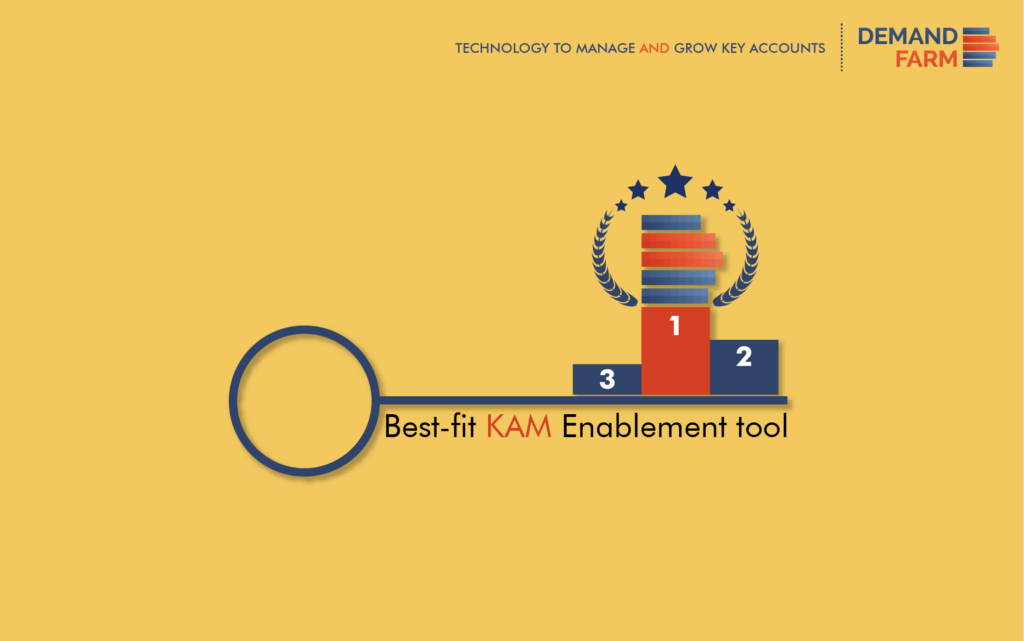
Thinking of which is the best Key Account Management Software in the market? Here is the answer. MarTech Advisor (MTA), one of the world’s leading sources for marketing technology news, research, product comparisons & expert views, recently published an extensive Buyer’s Guide to Key Account Management Software. This 32 page KAM Bible covers a wide range of topics from opportunities that induced the need for KAM enablement to listing Key Account Management software currently in the market. It makes us happy to announce that this exclusive Buyer’s Guide rates DemandFarm as the ‘Best-fit KAM & Sales Enablement tool’ in the market. Too busy to read the report? Don’t worry, we have got all of it covered for you. We have summarized all the useful information in this easy to read the blog. Without further ado, let’s look at the salient points that led to the rise of Key Account Management software. The Need for Key Account Management Software The inclusion of Key Account Management into various business processes has changed the dynamics of the relationship mapping between organizations and their Key Accounts. The importance of managing relationships with strategically significant customers was always a ‘no-brainer’, but only a few organizations were able to carry out the Key Account Management process efficiently. The times are changing for the better and organizations are investing both in Key Account Managers and Key Account Management tools. So what was the catalyst that brought forth this change… Catering to Key Accounts is paramount to an organization’s revenue growth. This fact is made evident by the 80/20 Pareto Principle which states that 80% of your business comes from 20% of your customers. Key Accounts are a boon that keeps on yielding profit. With cross-selling up-selling in Key Accounts, the revenue increases without the hassle of acquiring a new customer. The customers you will acquire with referrals from Key Accounts helps ease the strain on your marketing and sales efforts. Key Accounts are hard to acquire and even harder to maintain. In fact, the real challenge of an Account Manager starts after the acquisition of an account. The inclusion of Strategic Account Management processes into the organization helped the management of Key Accounts. However, a tool was needed for the effective implementation of these processes. The statements above prove the true worth of Key Accounts and the need to harvest, nurture and grow them. This need led to the inception of Key Account Management Software. Challenges resolved using Key Account Management Software: Data in Silos – Data in an organization is spread in silos or distributed across multiple systems. This restricts Key Account Manager from identifying and extracting complete information regarding their accounts. Key Account Management Software plays a significant role in handling this challenge efficiently. Lack of key insights – Even if a Key Account Manager is successful in accumulating all the data points, they are useless without key insights. A Key Account Management software helps extract knowledge from this data, providing the KAM with key insights thus aiding in realizing the optimal potential of Key Accounts. Multiple tools – With various individual tools and systems such as CRM, Word, Excel, and PowerPoint, etc for their day to day work to manage Key Accounts, the life of a Key Account Manager became tough and chaotic. A Key Account Management software helps solve the complexity by directly integrating with existing CRM and providing insights and analysis from existing data. What should a Key Account Management Software deliver? A good Key Account Management software should increase Key Account Manager’s productivity while simultaneously providing him with key insights and tools to manage and grow Key Accounts. Key Account Management software should be a one-stop-shop for everything related to Key Accounts. Following are the things that a Key Account Management software should deliver: Visual Org Chart Communication Tracker Contact History Affiliations Mapping Data Management ( collation, formatting, storage, etc.) Data Consumption Approach Real-time, anytime, anywhere access Collaboration Tools Easy report generation, exporting and sharing Reminders & prompts Data Analytics Finance Tracker How to evaluate a Key Account Management Software? Choosing the right Key Account Management software is a challenge, which a guide book like this is addressing. Following are some parameters to evaluate a KAM software: Trial or Demo Cost of Deployment Ability to Customize Integration with existing CRM Onboarding and Customer Success Speed of Deployment Business Impact Areas Adopting an Account Management approach along with the right tool can help transform your business. Following are few KAM enablement impact areas: People cost – Account-related data in an organization is highly vulnerable. All the business intel is tied to Account Manager; if he leaves so does your data! Opportunity cost – An organization loses deals and opportunities every day due to the lack of key insights. These insights are hidden in data silos and are hard to discover without the right key account management tool. Business cost – Without the right tools, the highly paid Key Account Managers are forced to waste their time on creating reports, collating data and tracking down people. Key Account Management software in the market currently Following is a list of Key Account Management software in the market currently for Medium/Large segment: Now that you know about the best Key Account Management software in the market don’t forget to request a demo of DemandFarm. Remember, we are just a click away!
Cross-Selling – The 6 How-To-Do-It for Key Account Managers
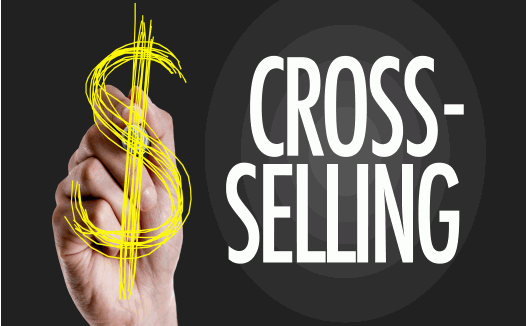
The main strategies of cross-selling up-selling can be broken down into 6 strategies for successful Key Account Management as detailed below. If these are followed, they give good results, as has been proven in the past. Check if your Key Account Managers have the skills required for cross-selling: Implementing a good cross-selling strategy is where things might go wrong. A piece of very good and sound product knowledge is a must-have for your Key Account Managers. At the same time, they cannot go overboard and push the prospect to say yes to you. Each Key Account Manager’s product portfolio should be kept to a size where they know each product in their portfolio well and get familiar quickly with new additions. Cross-selling requires that customers get a good fit and benefit: Sales for the sake of selling does not work. You cannot push unrelated products to prospects. They will buy only if they see a good fit for the product for their needs. A good idea would be to create a solution for many products that would be of more value to the customer than individual products. An integral part of cross-selling is also counseling and advice to customers in helping them make the right choice. Moreover, in providing them good customer service long after the purchase is made. KYC is a good technique to find out the woes and the wows of your customers regarding your products: Key Account Managers should always keep the customers engaged and happy without being intrusive, at the same time, gleaning insights from the customers about existing products through questions and surveys. This information should be used to fill current gaps and work on new products to fill a possible gaping need. Be more than a salesperson to your clients: Clients always see salespersons as trusted partners and feel good when the salesperson behaves like one. To ensure that valuable information regarding each Key Account and client preferences and peeves stays with the salesperson, you should work on a database with all essential information and share it with the sales team. This can help salespersons to make customized recommendations to each client and explain how a certain product may benefit him by using specific examples assimilated through the database. Sales and relationship analytics through Automation: Automating the sales process helps in keeping a close watch on client decisions and purchases and then identifying clients who are most likely to buy additional products from you. These automation tools use buyer profiles and personas through a scoring or weight-age method to identify hot prospects. The right message and the right move at the right time are crucial to cracking a deal: Account Managers should know the buyers enough to understand what their next move should be when to make their next move, how to do it, what to say, and what will seal the deal. They should also have a finger on the pulse of which campaigns are working and which are not and which click with whom. Cross-selling needs establishing clear account planning processes, setting expectations, training the team adequately and continuously, and monitoring results, not to forget course correction whenever the need is felt. Technology is the one thing that ties together all cross-selling efforts.
Value Selling – as the First Step to Key Account Management
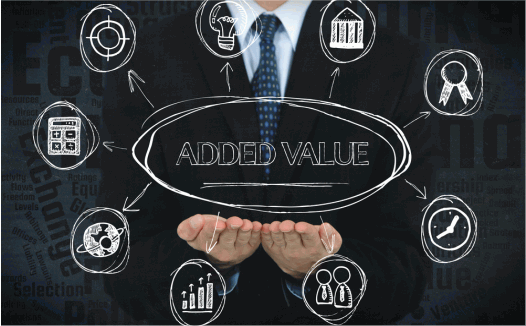
Needless to say that the first step to Key Account Management is Value Selling. Key/Strategic Account Management is incomplete without it. Value selling, however, exotic the term may sound, is a basic step to elevating your most important and critical accounts to the stature of Key Accounts. Most organizations are adept at using the STP (Segmenting, Targeting, Positioning) principle to differentiate their offerings in the market, vis-a-vis their target audience. But they still stand a big risk of losing the fine line of differentiation to their competitors who are eager to kill their first-mover advantage in no time at all. The truth of the marketplace which resembles a war zone at all times is that competitors are fast to move in and duplicate your hitherto unique positioning or offering. This makes your USP a commodity over time and this holds for most products and services over time. As per buyer perception research (Corporate Executive Board Research), out of the 100 times that sellers do a unique pitch and call their products unique, 86 of these times, buyers do not find anything unique about it; neither do they find anything compelling enough; in fact, the universal feeling is that the features are more or less the same as offered by other sellers of the same category of products. The truth is that organizations should see their products from the customer’s perception and not inside-out. You need to understand certain basics of Value Selling. The first rule of Value Selling is that prospects and customers need to like and trust you, the seller, first. If they do, then comes the next challenge – they seek the best value and the lowest risk. The eternally and arguable lopsided customer expectation of getting the best product at the lowest price is truth. That is what customers expect. They buy the product that fits these expectations the best. That means that they are willing to pay a certain price for a certain value. The universal truth about customers is that – Value and Risk are defined by the customer and not you, the seller. Thus, every salesperson needs to be well equipped and prepared to discuss tangible business cases, deliver desired outcomes to customers and manage risks while embracing value selling to accelerate sales. The organization should enable its sales force to deliver value to its customers ably and easily with the right sales enablement framework. For the products and services that are more like commodities, organizations need to get into automation to ensure smooth delivery to buyers in little time, perfect pricing and a great deal of standardization. In such cases, getting in a salesperson may not be a good idea at all. However, for products that are high-involvement and one-time purchases, and products and on which there is a lot riding, as seen from the customer’s point of view, these products need to be handled with a lot of TLC by the sales force. This is where Value Selling needs to come in. The salesperson who is the front end for such products needs to be well trained in the principles of Value Selling. Here, the organization needs to support them in training so they acquire a strong business acumen, key domain knowledge, and powerful insights to enable them to sell the right way and make a strong case in the organization’s favor. They need to be good at handling senior-level talks which are key to value selling. The salesperson needs to have the right kind of maturity in selling these value products. To recap, every organization needs to have product differentiation and understand the sales enablement, they need to have for every product category. Automation for the lower hanging fruit, the low-involvement products where buying is a matter of habit for the buyer; and for the high-involvement products, a different kind of sales enablement with training in the right skills, to enable the sales force to value-sell. Value selling is an art and once acquired can lead to the acquisition of key accounts for the organization and hence should be the first step in Institutionalize Key Account Management processes and methodology. However, without the right sales enablement framework, this is more likely to remain a distant dream. Explore our blog on cross-selling up-selling in which we’ve elaborated how it can be used to grow business in 2021.
How Key Account Management can change the world

Impact of Kay Account Management I am a Key Account Manager and I am very cognizant of the fact that I can change the fortunes of a company with a single strategic insight at the right time. Why do I think that? History is replete with companies that reached iconic heights and then spiraled into catastrophe. A few tragedies that have struck the business community in the past few decades are: Kodak Kodak was once a photography giant and now is long gone! What if Kodak had an Account Manager who was strategically strong and understood that print photography was going to go out of business soon. What if he suggested that Kodak use some of its vast resources to build its digital photography empire? Maybe Kodak would have been the Canon of our age! Hummer Another great example is that of the Hummer. The largest SUV known to man was a coveted car in the 80s and 90s. Owning a Hummer was a brawny status symbol and signaled that you had arrived in life. But in the new millennium, it became impossible for General Motors to market an SUV that gave the questionable mileage of 10 miles per gallon. Imagine if they had a Key Account Manager who could tell them that the turn of the century was going to bring an increased awareness about climate change. With those environmental warriors in mind, the Hummer could have created a new offering that may have kept them in business. But alas! They did not have a key account manager like me who could show them the right strategy. Nokia But one of the biggest failures of the 21st century is undoubtedly Nokia. The Finnish tech giant, which was once the biggest mobile company in the world is now nowhere! They were unable to keep up with the technological advancements in their field and were stomped upon in the stampede that is Apple and Samsung. Once again, what if they had a key account manager who could anticipate this and provide additional R&D capabilities to ensure that Nokia continued to push out iconic products? Alas! These companies did not have the strategic insights that my brethren could offer. A Key Account Manager is indispensable for most companies because they can offer strategic insights to a client that could generate additional revenue streams and successfully future proof of the client. So from sad stories let’s move onto success stories! Boeing-Nordam Boeing 787 Dreamliners are quite literally the dream of airline manufacturers across the world. They are fuel-efficient and long-range jets that bring down the cost of air travel. But to make it fuel-efficient, it was integral to bring down the weight of the aircraft. Nordam, a maker of aerospace parts and systems worked together with Boeing for 18 months to create a composite window frame that was 50% lighter than traditional aluminum frames. By this collaboration Nordam was able to increase its revenue share from Boeing and Boeing was provided phenomenal external R&D capabilities that it may not have had internally. Sintex Industries- French Manufacturer Sintex Industries, a leading Indian plastics molding company was able to team up with a French manufacturer to develop plastic components for high-speed trains. This strategic partnership allows both parties to innovate together to build world-class products for end-users. What could be better? Timberland-Omni United Some collaborations that are so unique that they have to be saved for last! Timberland a leading clothing manufacturer teamed up with Omni United a tires manufacturer for a line of tire that can be turned into footwear at the end of their life. The two companies killed two birds with one stone! They brought down their production costs and took up a CSR initiative in one fell swoop! It’s this kind of cross-industry collaboration that fuels the life of a key account manager like me. The ability to impact the environment positively while bringing down costs is what we all strive for. The Key Account Manager who dreamed of this idea is sure to be extremely proud of his achievement! There is no debate about the fact that businesses have changed the way we humans are interacting with one another and the planet. With strategic collaborations, they can do much more with much fewer resources. In this context, key account management needs to be strategically strong, dynamic, and future-focused to ensure that no opportunities are missed. An opportunity missed could be the difference between bankruptcy and resounding success! Please comment below if you know some influential examples and if you have any insights to share.
Introducing KAM Enablement
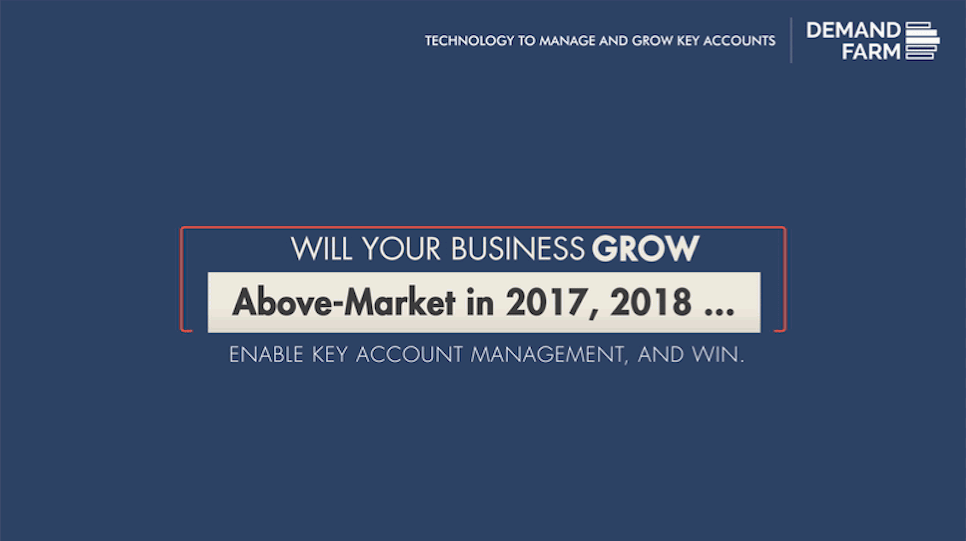
Last month, I met a very soft-spoken executive – Patrick, who leads the Key Account sales globally for an IT Services and Consulting firm. This meeting was about to change the way I looked at Key Account Management. I always knew Key Account Management helped in revenue growth, but that day I came to know its true potential.We met in downtown Manhattan at Pete’s Coffee shop. As the CEO of a company that built KAM enablement technology, I was excited about this meeting. So, I came early, took a two-seater table in a quiet corner, and waited for him to arrive. My eyes glanced out the window and noticed the people outside. He arrived. We ordered our coffee – I took my favorite Hazelnut latte, and we went back to the corner I had reserved. Patrick flew into New York to attend his company’s Q4 board meeting but graciously spared an afternoon to catch up with me. We talked a lot – from the cold summers of San Francisco to the Jets preparation for the upcoming SuperBowl. But, I could not help notice the palpable stress on Patrick’s face. When I asked, he shrugged it off by mentioning the usual pressure of business growth. I asked again, “What is keeping your mind occupied, Patrick? Did everything go well at the meeting?” He opened up a bit. “Our next year goals are now more focused on profitability, so I have to find a way to grow the business by 18% in next year without increasing the costs of new account acquisition”, he replied. “Hmm, isn’t that the puzzle most CEOs and sales leaders grappling with?”, I questioned. He nodded, and said, “For businesses such as mine, with several multi-million dollar clients, it sounds less like a puzzle and more like rhetoric”. He continued, “We have made maximum in-roads with our major accounts by utilizing the information in our Salesforce CRM”. I immediately asked, “Why don’t you adopt Strategic Account Management as a standard practice for your larger accounts. The methodology and processes are well established now”. It looked like this was something on his mind already. He replied “I know KAM can help, but I am not sure what is the best way to do it. With Salesforce, we know how to make decisions for sales planning. Without any means to know which levers to pull within complex Key Accounts, how will I even propose institutionalizing Key Account management process within my organization” I instantly understood Patrick’s dilemma. He was aware of the importance of KAM technology but also knew that mere CRM cannot show him the path to nurture his Key Accounts and farm them for more revenue. I did not have the answer then. Soon after, Patrick left, and I walked back to Times Square. I kept thinking. Why were sales leaders not thinking in terms of technologies that can enable KAMs, just like CRMs help in sales enablement? Seemed like I had gotten a hangover of Patrick’s dilemma. As I walked into the Times Square, I was stopped by a giant screaming display of T-mobile’s 4G network. The display showcased T-mobile’s 4G technology, which enabled people to do more! “This is it”, I said to myself. “This is the gap which Patrick wants to fill”. Just like the 4G network, Patrick needs a technology that can help him institutionalize Key Account Management in his organization. To enable his KAM teams to navigate the complex ecosystem of large accounts. Now, I became optimistic! Perhaps, KAM enablement is the answer to Patrick and many such B2B leaders, who need an intelligent layer above industry-standard CRMs to power their decision making in Account Management. That night, I slept well, knowing that there is true potential for institutionalizing KAM in large organizations using key account management tools. What is KAM Enablement? Think of KAM Enablement as James Bond’s Q. We see a KAM as a hero who accomplishes highly complex and uncertain objective of growing Key Account revenues year-on-year. He needs an intelligent aide to achieve his goals in a more deterministic manner. KAM enablement is a means to support KAMs in making decisions regarding their Key Accounts. While industry-standard CRMs do a great job as storage, retrieval, and high-level, averages-based analytics of the information, KAM enablement technology acts as an add-on layer on top of the CRM and processes the existing information to support deeper-level decision-making regarding Key Accounts. As important as Key Accounts are for an organization (80% revenues coming from 20% accounts), the future sales opportunities cannot be left at the mercy of a KAM’s behavior (what if he leaves your company), or the ability of the people to analyze all the information stored in the CRM. Enablement technology in 2017 is the precursor to Artificial Intelligence-driven CRMs – already talked about by Salesforce founder and CEO – Marc Benioff. Read this article for more info. I would paraphrase Marc Benioff here: The goal with SalesForce Einstein is to know what customers want before they know it. Eventually, we are also headed there, just that we started with the particular niche to serve KAMs. At DemandFarm, we built a technology that uses advanced algorithms to churn the existing information in the industry-standard CRMs (such as SalesForce, Microsoft Dynamics) to uncover unparalleled insights into your Key Accounts’ needs. Learn more about how KAM Enablement will help you grow your business in 2017.
The Real Challenge for KAM is What Happens After the Sale?

Key Account Management is a challenging function in an organizational setup, alright. Because although it is not responsible for direct sales, it is responsible for nurturing the customer after the sale is done, for as long as is possible. The nurturing is not as easy as the Key Account Management has to work with the customer as a partner would. The Key Account Manager has to understand the customer thoroughly, understand their problems, especially the not-so-obvious ones, and work out win-win solutions to resolve the problem or fill the gaps. Like any relationship, this is one key relationship that an Account Manager has to work on continuously, without letting up. For this, a CRM alone simply won’t do. The Key Account Management needs a specialized system tailor-made for the role of a KAM. This system provides an overall view of the entire account, the people involved, the multiple roles they play, their influencer-potential, the stakes that a complex account brings with it and customer dynamics, in order to take the right action at the right time. The new system takes into account the existing CRM and builds on it. Focus on the Accounts from which you can derive maximum value Organizations need to identify Key Accounts and help their Key Account Managers to focus on them. There is no point in spreading the Key Account Managers overall accounts. Key Account Managers have a lot of work to do within their Key Accounts. They need to be clear about: What their customers are trying to achieve and how they can help them. Whether they are aware of and know the customer’s corporate objectives and personal goals? How well they understand their customer is important Whether they and their strategy is in sync with the customer’s goals and can lead them to success. This way, the Key Account Managers can lead their customers to success, which is a win-win. A Key Account Management Software helps the managers fill in the information with the knowledge they have gained about your Key Accounts. It helps them monitor, control and manage their Key Accounts centrally. It is a reservoir of all that is important to their customer – his goals, objectives, current plans, actions, future plans, concerns, risks, updates, the strategy, the impact, the failures, the measures are taken to correct if necessary – everything is held together in a central place by the specialized system for the Key Accounts. This bank provides a single-window knowledge to an organization’s Key Accounts and provides deeper insights into the customer relationship. It helps the manager be on the same page with his customers about the actions being taken and their impact and future plans being made jointly by both. With the right system for KAM technology, the Key Account Manager becomes a trusted partner to his Key Accounts. They can see that he is more than a vendor to them. They know that he provides value for every step planned, every action taken. The system also provides transparency and clear accountability for both, so that everything happens in time and there are better chances of success when both partners are in it together. This system with its knowledge and information bank about all stakeholders and influencers at the customer level ensures that he is not left high and dry when his first contact leaves his job. This system takes care of people’s movement which is a natural phenomenon in an enterprise setting. It accounts for the fact that a relationship is between two organizations, and people may come and go, but the trust factor and knowledge built painstakingly over a period, is taken good care of. Key Account management allows the Key Account Managers to take on the challenges of his role while achieving success with his key relationships for the long term. If you found this blog insightful, you can also read our blog on Account Management or Explore the complete guide to Cross-selling and Up-selling to identify unexplored opportunities for your business as well as your clients’ business and grow better in 2021.
3 Sales Productivity Apps Key Account Managers need
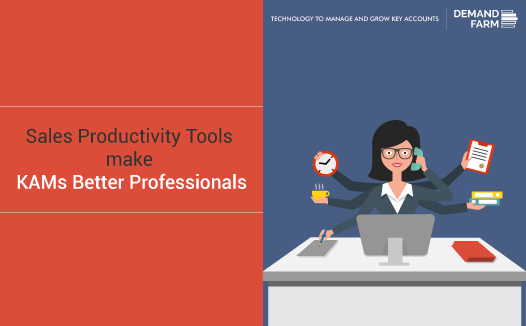
Sales Productivity apps are an important add-on tool for Key Account Managers in addition to their Key Account Management software. Times have changed and these apps are a luxury no more, they’re a necessity for efficient key account management. A key account manager needs these tools for efficient key account management. Why? Sales and account managers need to collaborate for possible farming and mining opportunities within Key Accounts, especially in the larger and more complex ones. Often, account managers have to work with sales to bring the new project in or close it themselves. Considering that, here are a few sales productivity tools that can help sales teams and Key Account Managers collaborate better and achieve their goals more effectively and efficiently. HubSpot Sales (Previously Sidekick by HubSpot) HubSpot CRM lets you manage sales pipeline, log sales acceleration activities and get insights from the activities of your sales team. How does it help Key Account Managers (KAMs)? Quickly add tasks for sales reps, such as follow-ups or up-sell conversations. Deliver sales insights to sales reps on the road with mobile alerts. Improves team communication with a full account history in a single view. Prevents deal from getting lost or delayed with activity tracking and the next steps. Inside Sales Box A Sales Acceleration Platform built for teams to manage and accelerate sales processes. A high performing sales team can deliver predictable revenue, consistently. What does it have for KAMs? Increases productivity of sales teams with timely reminders and sales cadence. Shares important information about contacts, such as emails, documents and files, and contact info with a click of a button. Connects with 3rd party applications through Zapier. Integrate your KAM technology and get started with Inside Sales Box. LinkedIn Sales Navigator Sales Navigator is a sales performance platform, helping organizations increase the productivity of sales teams. How do Key Account Managers leverage it? Focus on the right people – Find the right prospects quickly with LinkedIn Sales Navigator. This sales tool features a sophisticated algorithm to give you lead recommendations that are tailored to you. Easily save leads and create a sales lead list. Stay informed with insights – Get sales insights for more effective selling. LinkedIn Sales Navigator has the tools to help you stay informed and up-to-date about your prospects. Be in the know with timely and accurate information to turn cold calling into warm conversations. Build trusted relationships – Create a professional, trusted brand and engage with confidence by leveraging your own and your company’s network. Do you think I missed an application? Are there other applications that have helped boost your productivity?Yes, there can be. It totally depends on the use case.Visit MarTech Advisor and the Salesforce AppExchange for a range of sales productivity and key account enablement tools like DemandFarm.
Listen to this, Key Account Managers!

You may be hearing and seeing a lot of things Key Account Managers, but what most of you need to up your quotient on, is listening. We have heard a lot of talk on listening. But have we started practicing real listening? We have probably not, because, in sales, we are more interested in giving our sales talk, than hearing the customer out. We are focused on one thing – to make sure that whatever we have practiced as a sales pitch should not go unsaid, that we should not be missing out on the important parts. So what is listening? The real meaning of listening is to listen patiently to the customer so that you understand what he is saying or what he is trying to say but is not voicing it. Not all customers or people are explicit or matter-of-fact, when they are talking, you have to learn to ‘read between the lines’ when your customer is talking. This will help you understand him, his perspective, his need; this will help you assess the situation overall. This will help you tailor your pitch to suit the situation and the customer, and we promise; it will be more effective than a ready-made, standard pitch. The unfortunate truth is that, how much ever we talk about listening, it needs to be taught with examples. A daily has quoted that 2% of salespeople are taught ‘listening’ formally. Here are some eye-openers, err, ear openers on listening: We derive 55% of a message’s meaning from the speaker’s facial expressions 38% comes from how he says the message that is his tone of voice and just 7% from the actual words spoken! 50% is how much information we usually recall immediately after we listen to someone talk. We can listen at twice the rate than a person can talk. How to listen and handle a call well. Listen without interrupting – Initiate the conversation and then sit quietly, listening to the customer intently. Acknowledge what is said – Acknowledge what the customer has said. This does not always mean you are in agreement. This just shows that you are listening, which is enough to keep your customer talking. Ask questions – Ask questions to get clarity on what the customer is saying. This way you will learn more than the obvious. Recap and restate – If there is an objection raised, or if it is something the customer is saying, restate it to be on the same page with him and let him know that you are on the same page. Address and overcome – Don’t beat about the bush. Tackle the objection directly by using factual information. For this, you will need to have the product information and the knowledge at your fingertips. Close – Very, very important. Do not leave any loose ends. Close that particular meeting by stating clearly the next steps expected and from whom. Be polite but the state. Move the sale forward in its journey. Correct course, if need be and commit – A sale is never a one-time ‘Hit the bull’s eye’. It takes time. Often, in the journey, the customer will add different inputs that will change the course of your plan. Moreover, will mean that you will have to correct the course, Be patient. Don’t be in a rush to commit just so you can close it. Show your willingness to alter and present again, but with clear timelines specified. I hope these were some handy tips to learn and practice the art of listening and ensuring you engage correctly with your customer and add to the sales effectiveness during every customer interface. God gave us two ears and one mouth for a reason, as it is said. The sooner we practice using our two ears, fully, we get closer to our sales objective. You can also download our whitepaper on the Hype & Art of KAM. P.S- Have you ever wondered, How many Key Account Management professionals are there around the world?
Key Account Management Software: 4 Features to look out for
Key Accounts are complex, global entities and it would be impossible for even the most accomplished Key Account Manager to keep track of and govern the Account manually. There is a need for software and tools for Key Account Management to help the Key Account Managers realize the optimal potential of the Account. To that end, here is a round-up of some of the must-have features of a KAM Enablement technology – whether it is a tool, software, or app: 1. Visual Representation to aid Strategic Decision Making Because of the way the human brain processes information, a visual representation always helps in simplifying complex data. Visualization is a quick, easy way to make strategic decisions in a universal manner, and execute accordingly. When it comes to key accounts, you need to have a landscape view of available white space opportunities and scope continuously for business and value creation opportunities. A visual representation in a KAM technology enabler or software can not only help you see the bigger picture, but also analyze and improve your selling points, and explore opportunities with existing key accounts. 2. Organizational Hierarchy In B2B selling, you are not selling to one person. It is usually a group of decision-makers, who influence the deal based on their position within the organization. In-depth awareness of the organizational hierarchy is, needless to say, a must. A comprehensive account management would go beyond to even highlight formal and informal affiliations, disposition towards the brand, etc. It will indicate which relationships need nurturing, by whom, in a timely way. A Key Account Management Software should clearly indicate whom to connect with, at each stage of the selling process, with an added option to make behavioral notes about each contact, so you make the most of the time invested in building relationships. 3. Data Consolidation and Management Imagine a situation where half of your key account’s data is in spreadsheets, and the other half is spread over PPT’s and word docs, and elsewhere. How inconvenient would that be? Key Account Management software must provide a consolidated platform, which collates data from varied sources, in a consistent format, in one place, so that the right internal stakeholders can access them and be on the same page. With a central repository that everyone can access in real-time, the additional headache of version control is avoided. It will help you focus, and invest your valuable time in strategic account planning and collaboration, instead of laboring over data collation and documentation. 4. Analysis and Tracking When you are managing Key Accounts, you need to keep track of Key account Plans and goals. A Key Account Management Software must help you with an actionable approach to tenure-based plans, along with easy-to-access tabs on the account plan screen. A good module that can help achieve these must provide you with insights to check progress on activities so that you can make the right strategic calls at the right time. In an ideal key account management software, your company’s sales process is expressed visually in a pipeline form, showing where all deals stand in which stages, and each stage subdivided into activities and tasks. Learn more about how KAM Enablement will help you grow your business in 2017. Download the e-book here.
How to Ensure Your Key Accounts are in Good Health – Top View
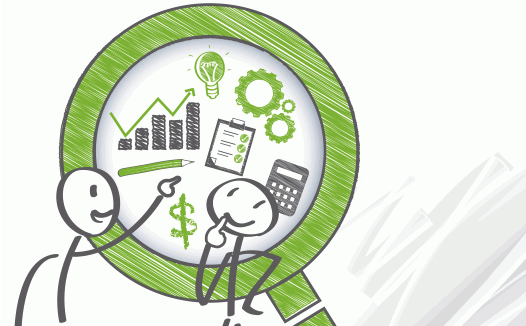
It is all very well to think and expect that your C-Suite in your Key Account Management structure will live up to your expectations vis-à-vis Key Account Health and they will know every little bit of detail that needs to be known. However, if you are using traditional health monitoring methods, then this is next to impossible. After all, when your Key Accounts scale up, how much is one Director or a handful of your top people going to know about the details?It is, therefore, necessary to have a transparent system that addresses the 3 points listed below: Is your KAM team cued into the key goals and success parameters of their clients? Sharing the above in black and white with the team assigned for KAM Sales is very important to measure the performance of the Key Accounts. This adds to the building of trust and retaining of the Key Account as the client sees your team as his trusted advisors, who are working with him towards a common goal. Unfortunately, though, this is not the case. Many Key Account Managers are not aware of the tangible goals or have not got it in writing. Are the contracts well documented and broken down in small, understandable, easily accessible dockets? The answer to this is usually, NO. Contracts are big 30 pager documents which are lost in the grind and dug up only before the all-important reviews or during a crisis. The Strategic Account Management team often forgets or is not aware of the small details on say Page 24 that a client may refer to when he is not happy. At that time, it is too late. As the top management, it is important that you have your entire team completely cued into each and every detail of the contract, however, big the contract. The best way to do this is to document the contract into small-sized dockets accessible to all for regular browsing. These need to be discussed and rehearsed during every weekly meeting for quick recall from the team. This practice ensures that the goals listed down and well discussed are also well followed and achieved. Has your team put down in writing clear internal goals that increase the probability of retaining that key account? Internal goals have to be quantified to measure what the team is up against. The account health as defined above depends on the frustrations in the account management that crop up. It helps you, as a Director, to quantify these frustrations and discuss this with the team clearly, so that you can all put your heads together to improve the situation. Generic, non-tangible goals and performance measures are not enough; they should have a strong metric system in place that can be easy, transparently monitored from anywhere. Team members need to have access to this system. Clear, measurable insights into Key Accounts are known to increase not just customer retention, but also positively impact profitability by 25 to 125% DemandFarm’s Key Account Management software helps you and your Key Account Management team to quantify these goals, spot the gaps and improve them for better performance in the relationship mapping and profitability of Key Accounts. Also read our blog on Key Account Management VS Regular Account Management.


